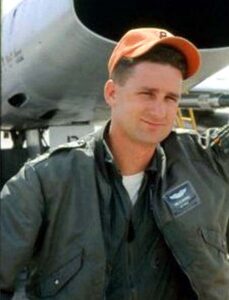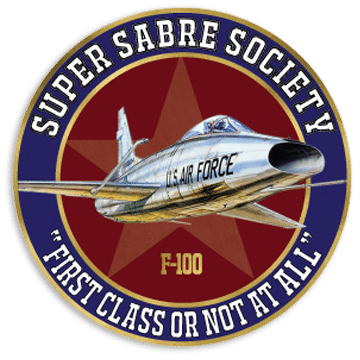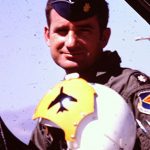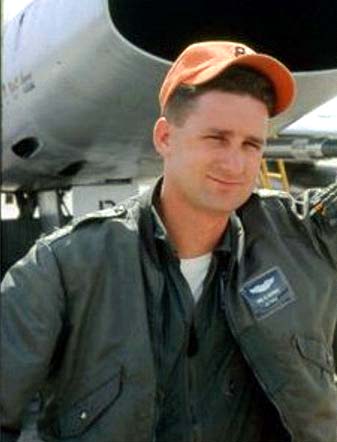Major General Harald G. Hermes is vice commander, Headquarters 9th Air Force, and deputy commander, U.S. Central Command Air Forces, Shaw Air Force Base, S.C.
General Hermes was born in 1937, in Pontiac, Mich., and graduated from Columbia High School, Maplewood, N.J., in 1955. He earned a bachelor of arts degree in geology from Cornell University in June 1960 and a master’s degree in public administration from Auburn University in 1980. The general completed the Industrial College of the Armed Forces in 1971, Air Command and Staff College in 1973, and Air War College in 1980.
He was commissioned through the Air Force Reserve Officer Training Corps program and received pilot training at Moore and Laredo Air Force bases, Texas, earning wings in September 1961. After advanced training he was assigned as an F-100 pilot with the 522nd Tactical Fighter Squadron, Cannon Air Force Base, N.M., in October 1962.
In April 1965 General Hermes transferred to Royal Air Force Station Lakenheath, England, where he served with the 493rd Tactical Fighter Squadron and, then, with the 48th Tactical Fighter Wing as a standardization and evaluation pilot. He returned to the United States in April 1968 and completed F-105 training at McConnell Air Force Base, Kan. In November 1968 he was assigned to the 357th Tactical Fighter Squadron and, later, to the 355th Tactical Fighter Wing, both at Takhli Royal Thai Air Force Base, Thailand. While at Takhll, he completed 130 combat missions.
General Hermes transferred to Luke Air Force Base, Ariz., in November 1969 and served as an instructor pilot, first in F-100s and, later, in A-7Ds. From August 1971 to December 1973 he was an A-7D instructor pilot and flight commander with the 333rd Tactical Fighter Training Squadron and, subsequently, with the 357th Tactical Fighter Squadron, both at Davis-Monthan Air Force Base, Ariz.
In December 1973 General Hermes transferred to Headquarters Tactical Air Command, Langley Air Force Base, Va., where he served as a staff officer and A-7 program training manager in the Directorate of Operations and Training, Office of the Deputy Chief of Staff for Operations. In August 1976 he was assigned to the 425th Tactical Fighter Training Squadron, Williams Air Force Base, Ariz., as operations officer, flying F-5s. In October 1977 he became commander of the 354th Tactical Fighter Squadron, later the 357th Tactical Fighter Training Squadron, at Davis-Monthan Air Force Base.
After completing Air War College at Maxwell Air Force Base, Ala., in June 1980, General Hermes was assigned to Headquarters U.S. Air Force, Washington, D.C., as deputy chief and, later, chief of the Tactical Division, Directorate of Operations and Readiness. In February 1982 he became vice commander of the 31st Tactical Training Wing, Homestead Air Force Base, Fla., and in May 1983 he was assigned as commander of the 347th Tactical Fighter Wing, Moody Air Force Base, Ga. He returned to Tactical Air Command headquarters in February 1985 as assistant deputy chief of staff for plans and, in June 1985, was assigned as assistant deputy chief of staff for operations. From March 1987 through July 1989 he was Tactical Air Command’s chief of staff. In August 1989 the general became deputy commander/chief of staff, 4th Allied Tactical Air Force, Heidelberg, West Germany. He assumed his present position in October 1991.
The general is a command pilot with more than 4,200 flying hours, including 417 combat hours, in eight different types of aircraft. His military awards and decorations include the Legion of Merit, Distinguished Flying Cross, Meritorious Service Medal with two oak leaf clusters, Air Medal with six oak leaf clusters, Vietnam Service Medal with five service stars, and Republic of Vietnam Gallantry Cross with Palm.
He was promoted to major general May 1, 1989, with same date of rank.
Hal Hermes – Caterpillar Stories
 Ejection number 1, 1110 MST, Monday, 17 May 1962, F-100C 54-2033.
Ejection number 1, 1110 MST, Monday, 17 May 1962, F-100C 54-2033.
I was a 1/Lt student in the 4515th CCTS at Luke, flying number three position in a four-ship nuke weapons delivery mission led by “Diamond,” aka Capt. Ron Johnson. On the Range #1 run-in for my third delivery, stabilized at 500 ft AGL, 500 KIAS, I experienced a sudden deceleration, accompanied by the sound of a turbine winding down somewhere not far below and behind. Keen perception based on excellent training prompted the garbled scream, “flameout” and zoom to 7,000 feet. Several airstarts were attempted – no fuel flow, no light, no dice.
Both Captain Johnson and the range officer, Capt. Dave Duarte called for ejection at 2,000 feet AGL. Did that. It was surprisingly windy at 220 KIAS and the ballistic seat ride was pretty violent. But all of the gear worked as designed and I enjoyed a quiet ride to a soft landing somewhere beyond the nuke circle. Pick up by Pedro helicopter was followed by an hour or so in the Luke dispensary, then a TR-X mission on Tuesday with “Peso,” aka don’t recall. Findings: Most probably cause was malfunction of the main fuel shutoff valve, which was found in the 90 percent closed position. Possible cause was materiel failure of the diaphragm seal assembly in the engine-driven fuel pump. Parts shipped to OCAMA for priority TDR were lost in transit.
Ejection number 2, 1005L, 26 Nov 1964, F-100D 55-3551.
In an augmented 522nd TFS, Cannon AFB, I had been TDY to Southeast Asia for several months following the famed “Gulf of Tonkin Crisis.” First sent to Clark AB, we later manned a detachment at Takhli RTAFB, then formed up for a wet two months or so at Danang AB. There we flew mostly combat support missions escorting RB-47s and RC-130s along the coast of North Vietnam, and, rarely, RF-101 escort over Laos. Finally ordered back home in late November, I was scheduled as #4 in a five-ship (Ming 01) led by Captain Don Murgatroyd, headed initially back to Clark. (As an aside, I’d removed two ammo cans from ‘ole 551 and replaced them with almost everything I owned, including lots of booty purchased in Hong Kong during an R&R.)
Upon arrival at Clark, the returning heroes lined up with the runway in an arrowhead formation at 1,000 ft AGL 350 KIAS. I was fat, dumb, and happy in trail with lead, #5, Arnie Clark, in trail with me. We were maybe a mile short of the runway when a noticeable loss of thrust and sound of a turbine winding down somewhere just below and behind led me to conclude that, thanks to keen perception, excellent training and past experience, I’d flamed out.
Several airstart attempts, no light, no fuel flow (again), led to ejection quite low, AGL-wise, and slow. No wind, a nice push from the rocket seat, a tumble, and a sugarcane field racing up to meet me prompted a throw-away yank at my “D” ring. A short, sweet descent to a soft landing, then a few minutes entertaining some students from a nearby grammar school were followed by ground transportation back to Clark. Findings: “Flameout due to fuel starvation from an unknown cause” (possibly) “failure of the engine-driven fuel pump or failure of fuel control” (I had selected emergency fuel as per the boldface), and that was it.
Maybe everyone was busy screwing up the new war, but the accident board, composed of one F-100 jock and several Base Flight straphangers was not Clark’s first team. The seat, kit and kaboodle had been carried off by the locals, then sold back to the USAF, sans belt and harness, so it was never determined why the automatic system didn’t perform ( the Board concluded that I hadn’t hooked my zero lanyard – wrong!). They also got all fired up over the three-ship formation takeoff we’d made out of Da Nang.
-Hal Hermes










